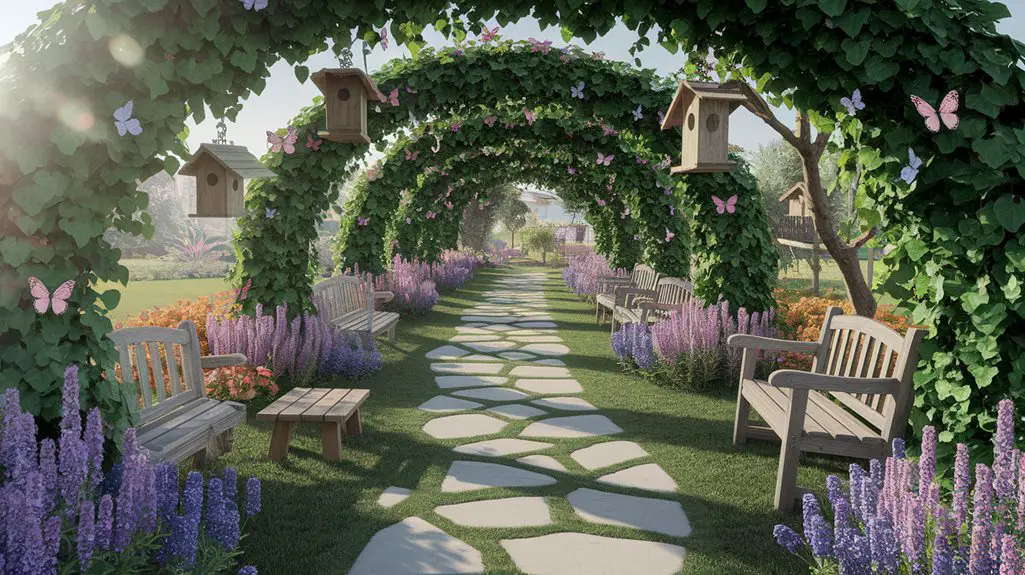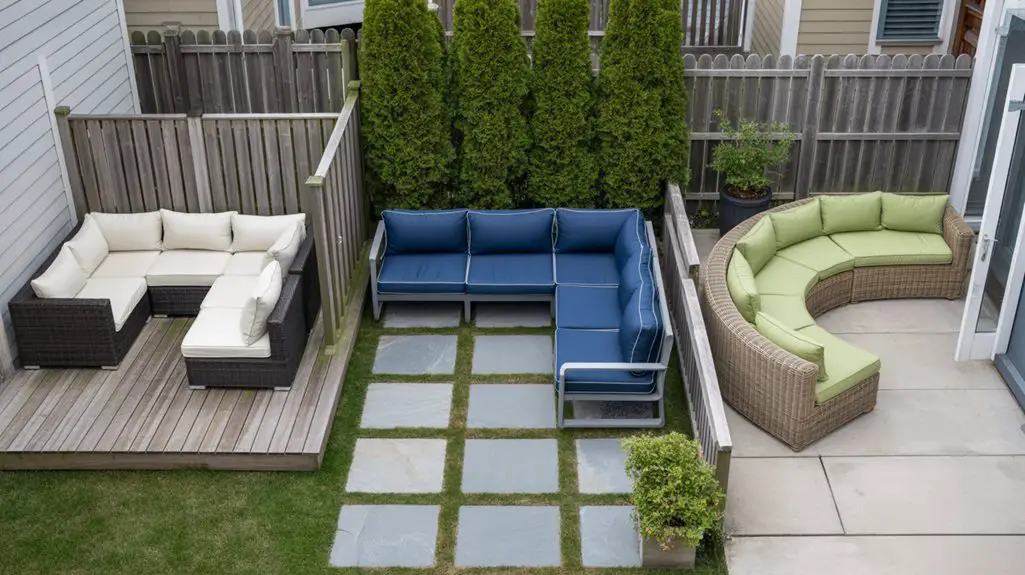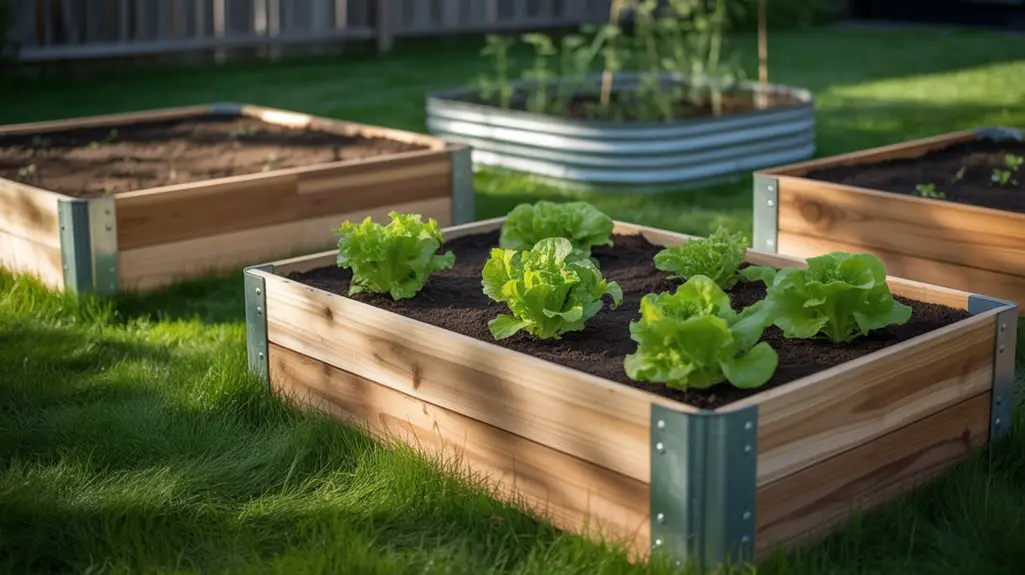When the Johnson family redesigned their backyard, they prioritized walkways that would work for everyone—from their toddler to grandma with her walker. You’ll face similar challenges when creating garden paths that serve your entire family’s needs. Safety, accessibility, and fun don’t have to be competing priorities in your outdoor space. The right materials, thoughtful design, and strategic elements can transform ordinary walkways into functional features that enhance your garden’s appeal while keeping everyone safe.
Choose Durable Materials That Withstand Active Play
When designing family-friendly garden walkways, durability should be your top priority. Select materials that can handle heavy foot traffic, bikes, scooters, and occasional rough play without cracking or deteriorating.
Concrete pavers offer excellent durability and come in various textures and colors to complement your landscape. Flagstone provides natural slip resistance when wet, while properly installed brick withstands decades of use. Consider rubber pavers in play areas—they reduce injury risk from falls and maintain their appearance for years. Rustic backyard garden pathway options can also enhance the charm of your outdoor space while providing a functional surface.
Install materials over a properly prepared base of 4-6 inches of compacted gravel to prevent shifting and sinking. Edge your walkways with sturdy material like metal, concrete, or stone to maintain their structure.
Remember that investing in quality materials now minimizes maintenance and replacement costs later.
Design Wide Paths for Side-by-Side Walking
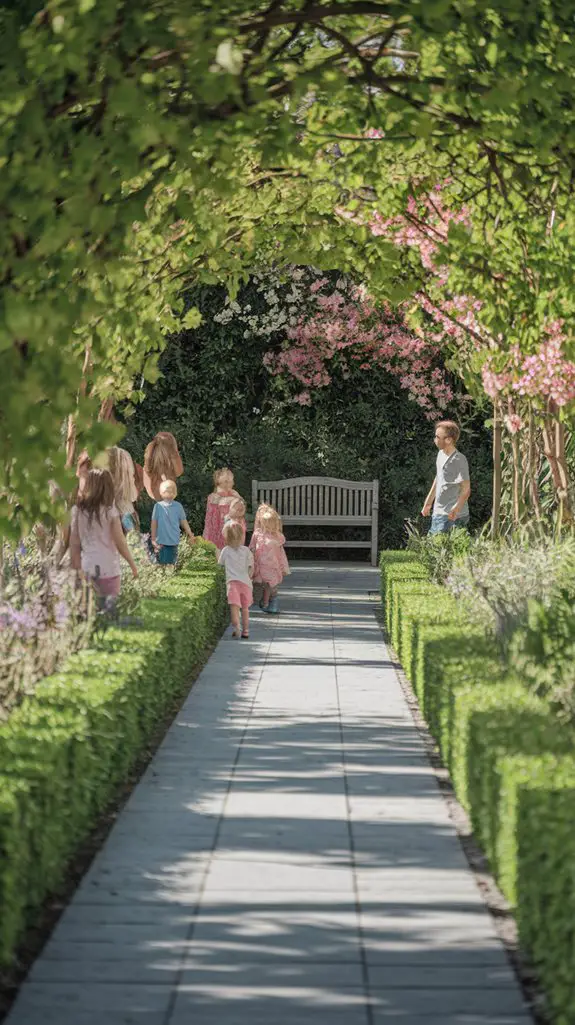
The width of your garden walkways plays a key role in creating truly family-friendly spaces. For comfortable side-by-side walking, aim for paths at least 4 feet wide, increasing to 5-6 feet for primary routes. This width accommodates parents walking alongside children, strollers, wheelchairs, and garden carts.
Consider traffic patterns when planning path dimensions. Main thoroughfares connecting key garden areas require greater width than secondary paths. At junctions or gathering points, create wider “nodes” of 6-8 feet to allow for comfortable pausing and conversation.
Remember that narrow paths force single-file movement, which disrupts family interaction and conversation. Wide paths invite spontaneous engagement with your garden’s features and encourage children to explore alongside you rather than racing ahead or trailing behind. Additionally, incorporating a backyard stage can enhance the entertainment value of your garden space.
Create Sensory Pathways With Different Textures
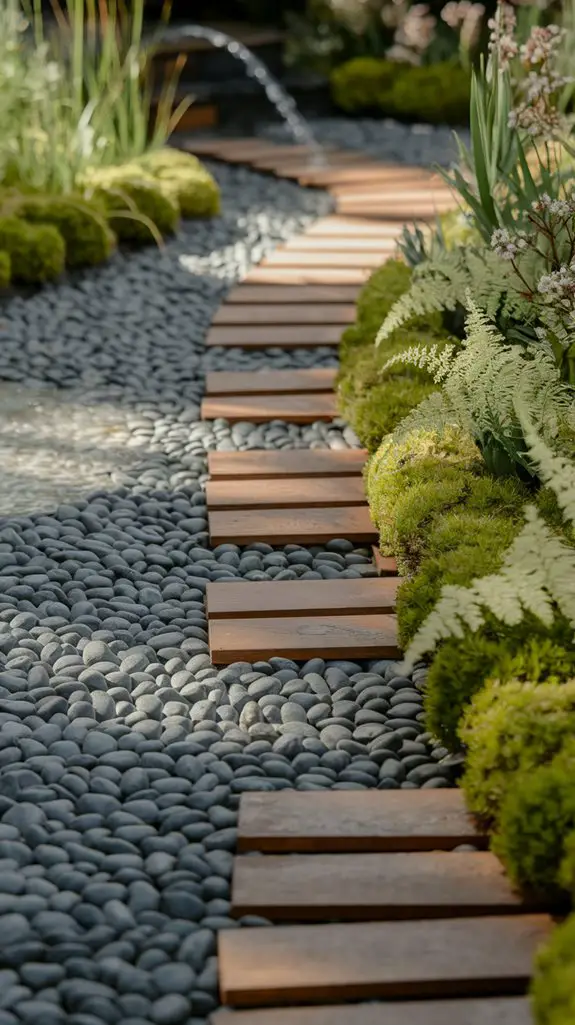
Sensory pathways featuring diverse textures transform ordinary garden walkways into engaging experiential landscapes for family members of all ages. Incorporate materials that stimulate touch, sight, and even sound as children and adults travel through your garden.
You’ll create memorable experiences by alternating between:
- Smooth river stones that massage feet while providing stable footing
- Wooden sections with varied plank widths that create rhythmic visual patterns
- Crushed granite or pea gravel areas that produce satisfying crunching sounds underfoot
- Moss-covered stepping stones that offer soft, cushioned sections contrasting with harder materials
Consider adding textural borders along path edges using ornamental grasses or low-growing herbs that release scents when brushed against. Incorporating water features can further enhance the sensory experience, creating calming sounds and adding visual interest.
These multi-sensory pathways encourage slower exploration, allowing family members to connect with nature through multiple senses simultaneously.
Install Proper Lighting for Evening Safety
Because garden pathways should remain both functional and safe after sunset, installing strategic lighting transforms your family walkways into 24-hour accessible spaces.
Select low-voltage LED path lights that consume minimal energy while providing sufficient illumination to prevent trips and falls.
Position fixtures 6-8 feet apart along walkway edges, ensuring even light distribution without overwhelming brightness. Consider motion-activated sensors for less-traveled areas to conserve energy.
Install step lights on any elevation changes and uplighting near potential hazards like tree roots or uneven surfaces.
Solar options eliminate wiring needs but verify their winter performance in your climate.
Remember to direct light downward to minimize light pollution and neighborhood disruption.
Weather-resistant fixtures with proper IP ratings will withstand outdoor conditions and extend your lighting system’s lifespan, ensuring years of safe evening garden enjoyment. Additionally, using proper lighting techniques can enhance the overall aesthetic appeal of your garden pathways.
Incorporate Fun Elements Like Stepping Stones
Transforming ordinary walkways into interactive adventures requires just a few creative elements that will captivate children while maintaining the garden’s overall aesthetic.
Stepping stones offer both practical pathways and playful opportunities for exploration. You’ll find they encourage children to hop, jump, and engage with the outdoor space while guiding them through designated areas.
- Create personalized stepping stones using concrete kits where children can add handprints or decorative items.
- Arrange stones in patterns like spirals or animal footprints to spark imaginative play.
- Incorporate colorful mosaic tiles or glow-in-the-dark elements for added visual interest.
- Vary stone sizes and shapes to create games like “only step on the round ones.”
Additionally, charming garden pathways can be enhanced with natural elements like flowers or shrubs to create a more inviting atmosphere.
These interactive elements turn simple navigation into engaging activities that the whole family will appreciate during garden time.
Plan Gentle Slopes Instead of Stairs
When designing family-friendly garden walkways, gentle slopes offer superior accessibility compared to traditional stairs. They accommodate strollers, wheelchairs, and unsteady toddlers while reducing trip hazards for elderly family members.
Aim for a gradient between 1:20 and 1:12 (5-8% slope) to balance accessibility with practicality. Incorporate non-slip surfaces like textured concrete or rubber-infused mulch to prevent accidents during wet conditions. For longer inclines, consider creating level landings every 6-8 feet where users can pause.
Edge your sloped pathways with low retaining walls that double as seating. These borders help define the path while providing stability for those who need additional support. Additionally, consider using budget-friendly materials that can enhance the appearance of your pathways without breaking the bank.
Remember to install proper drainage channels alongside slopes to prevent erosion and pathway deterioration during heavy rainfall.
Select Non-Toxic Plants for Path Borders
Select non-toxic varieties that won’t pose risks to curious children or pets who might sample foliage. Consider plant height and spread to prevent overgrowth onto walkways that could create tripping hazards.
- Choose edible borders like thyme, oregano, or strawberries that release pleasant aromas when brushed against.
- Incorporate soft-textured plants like lamb’s ear or ornamental grasses instead of thorny or prickly varieties.
- Avoid common toxic garden plants including foxglove, lily of the valley, and oleander.
- Select evergreen varieties like boxwood or dwarf conifers for year-round definition of pathway edges. Additionally, planting flowers that repel pests can enhance the safety and health of your garden environment.
Conclusion
Your family-friendly garden walkway isn’t just a path—it’s a journey through your outdoor space. By implementing these seven practical tips, you’ll create walkways that function like well-designed highways, directing traffic while providing safety and enjoyment for all ages. Remember, the right materials, adequate width, and thoughtful design elements work together to guarantee your garden paths serve your family’s needs for years to come.

